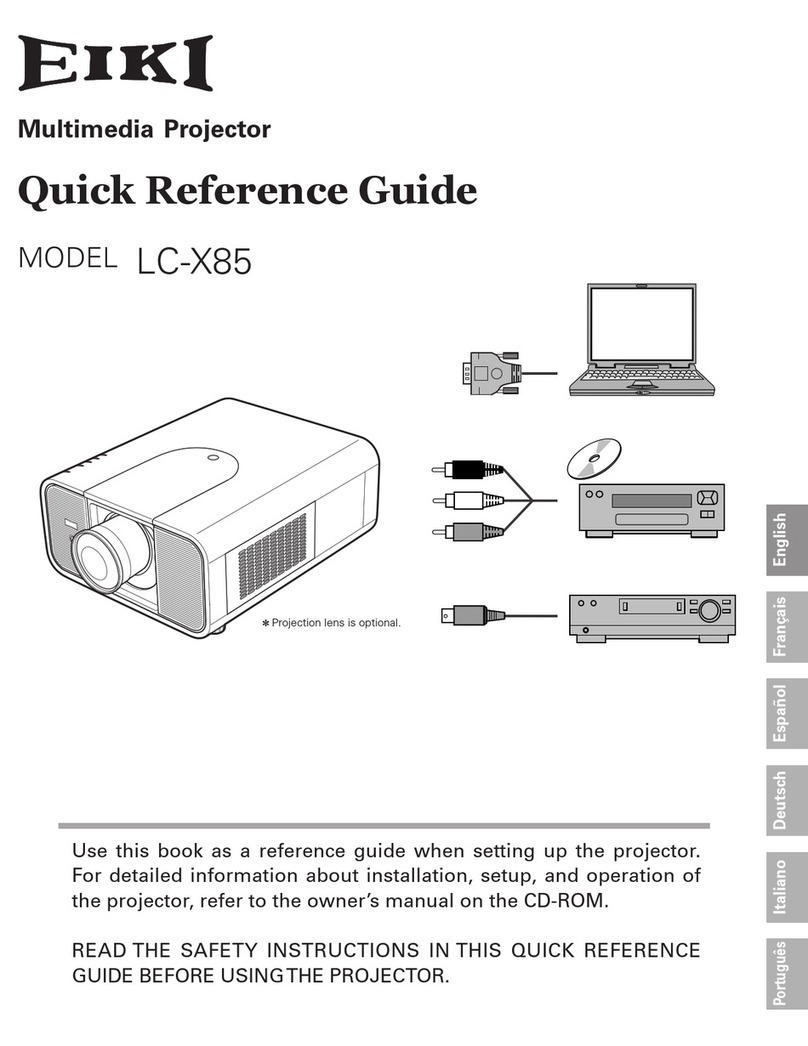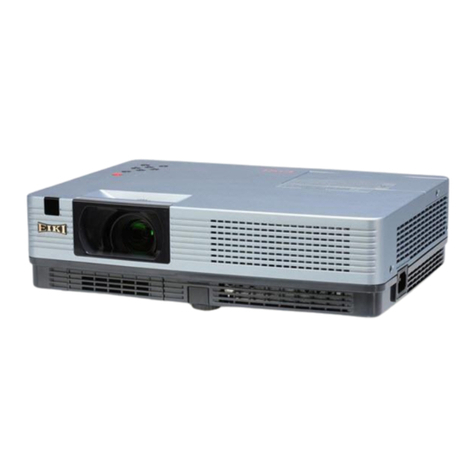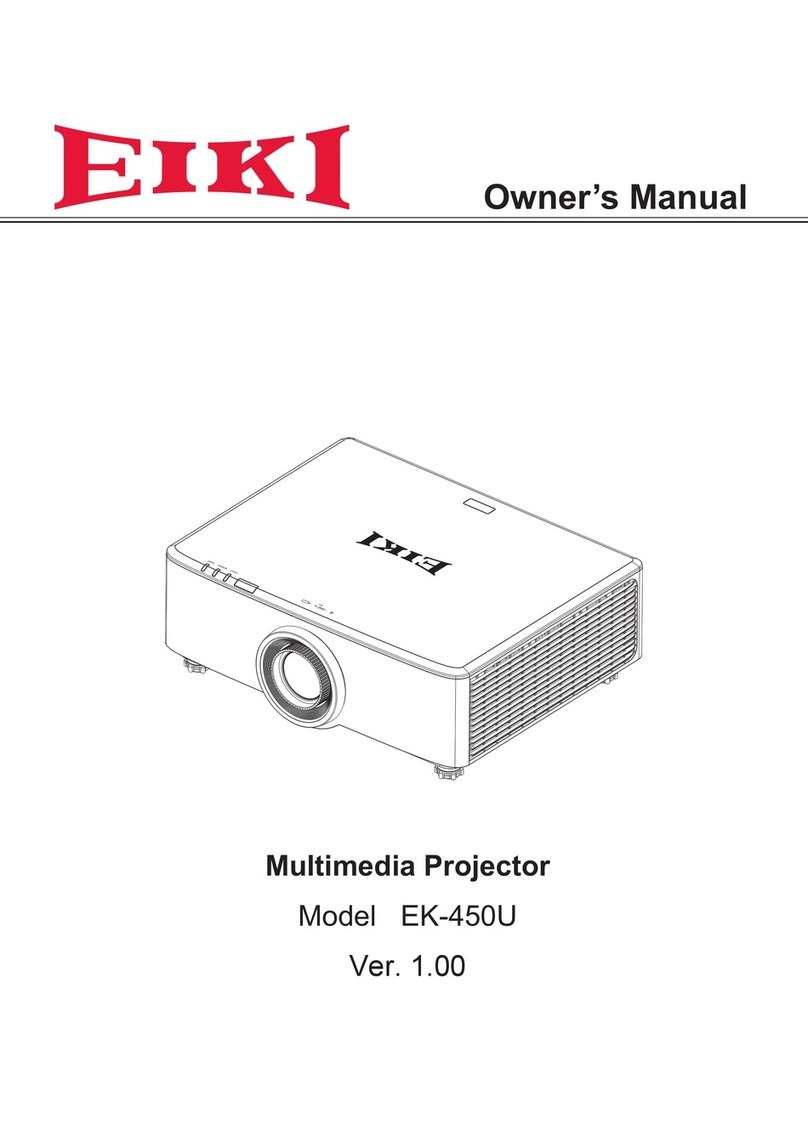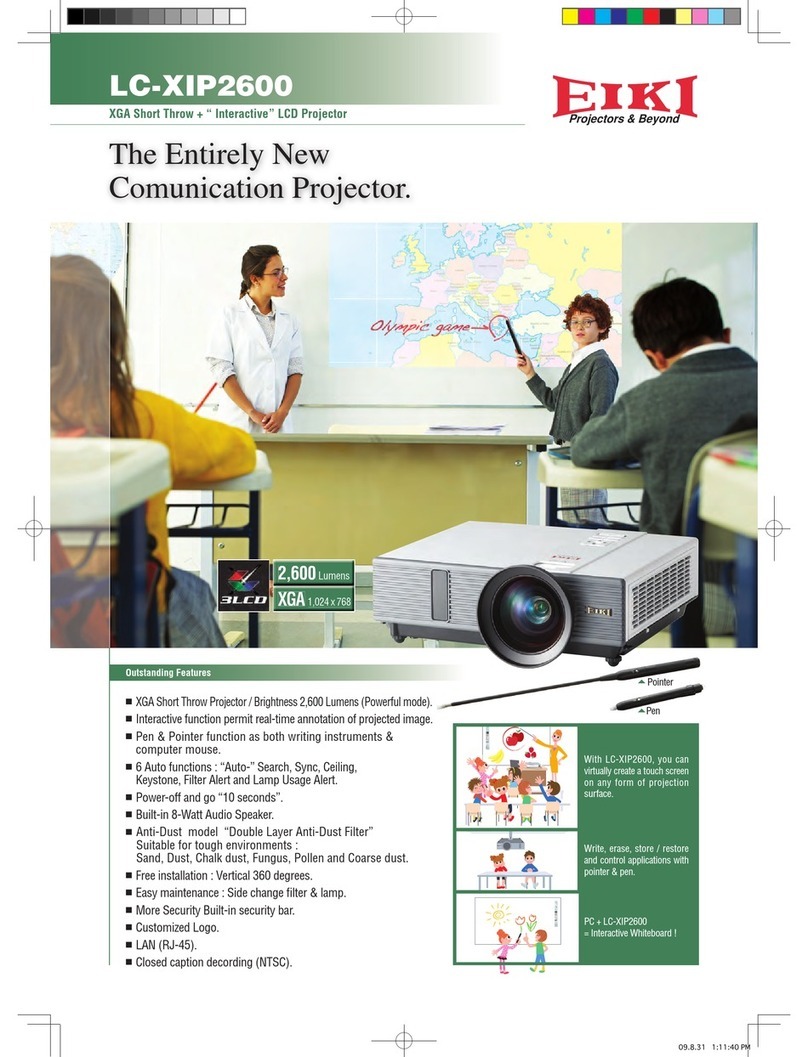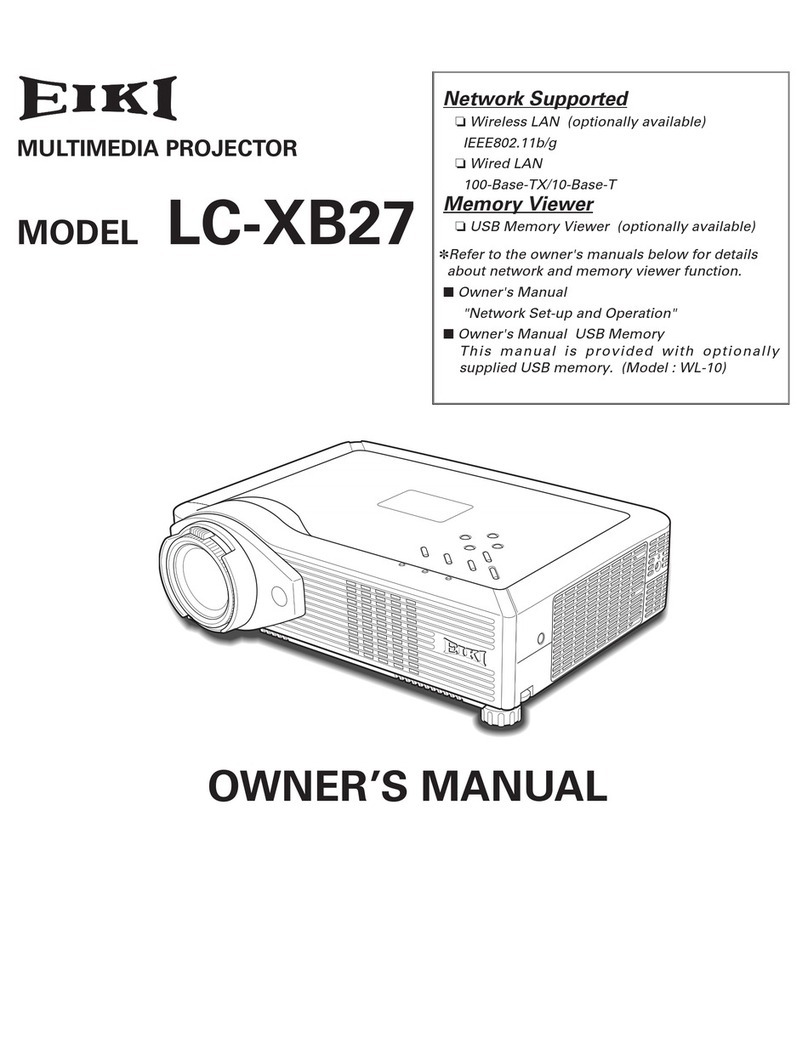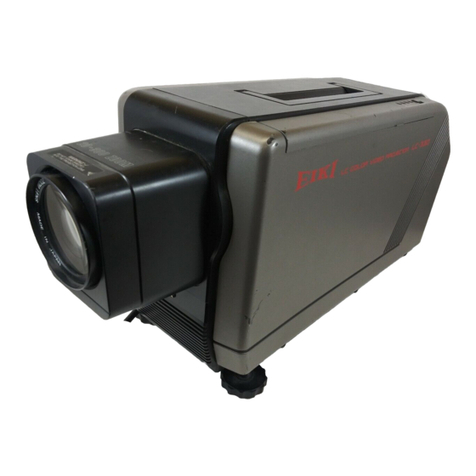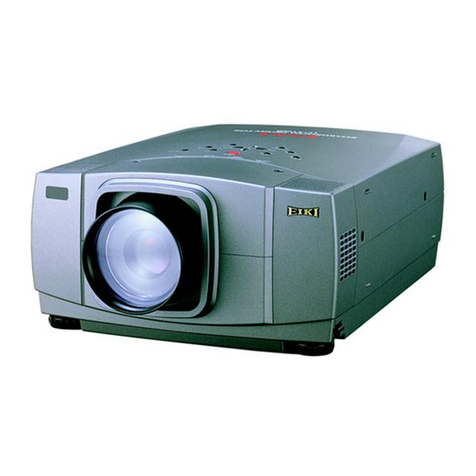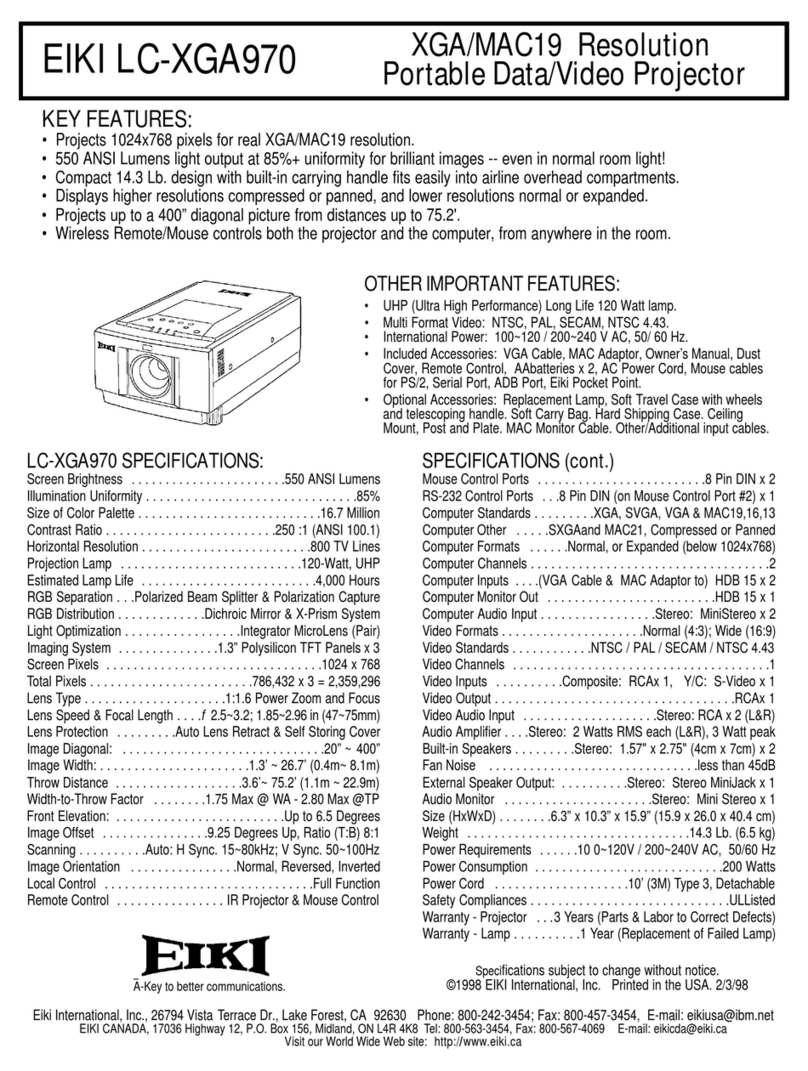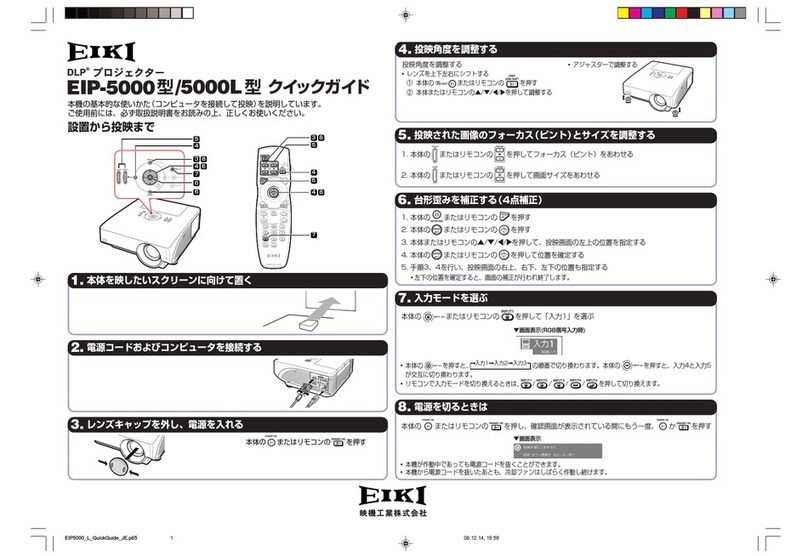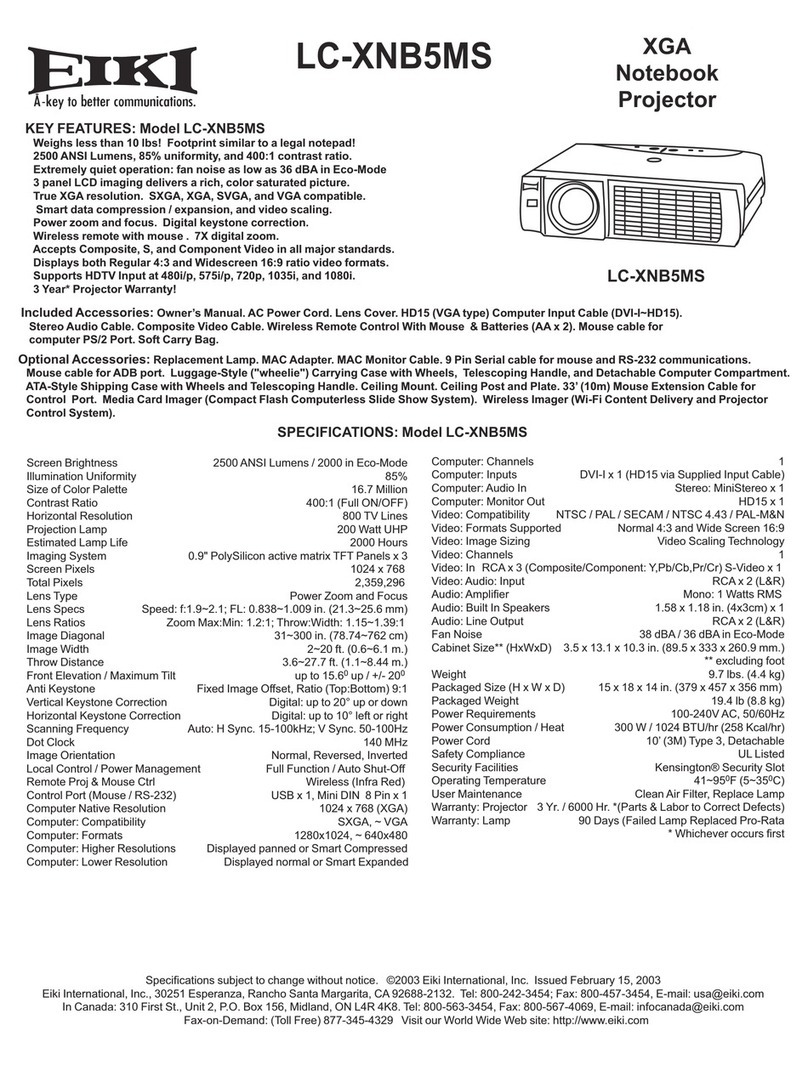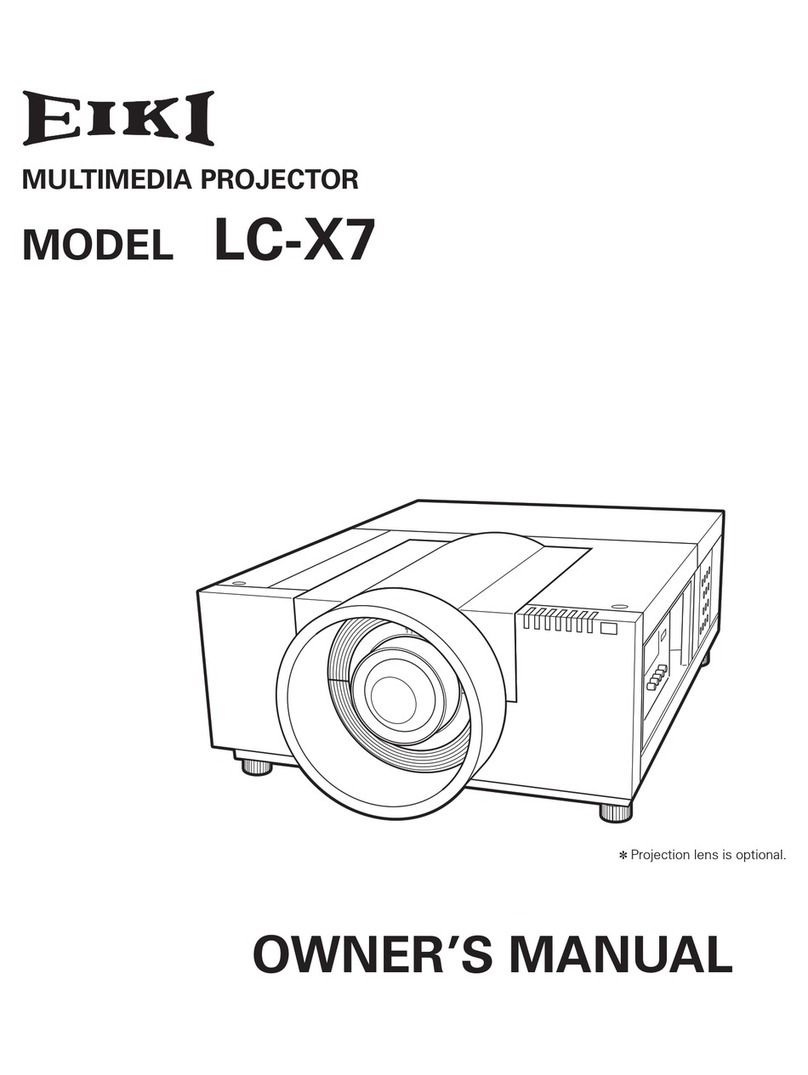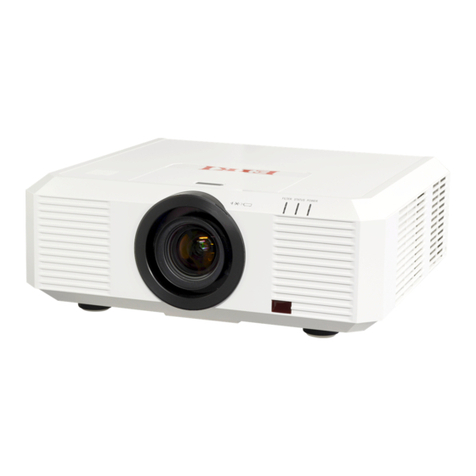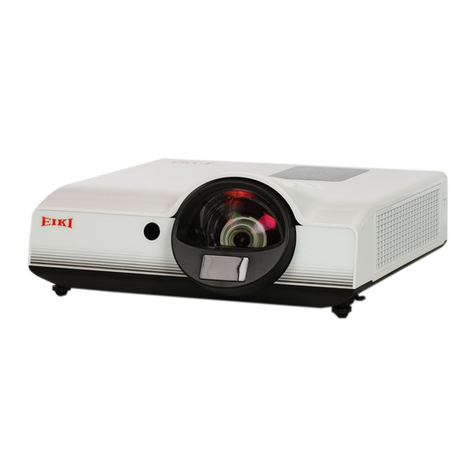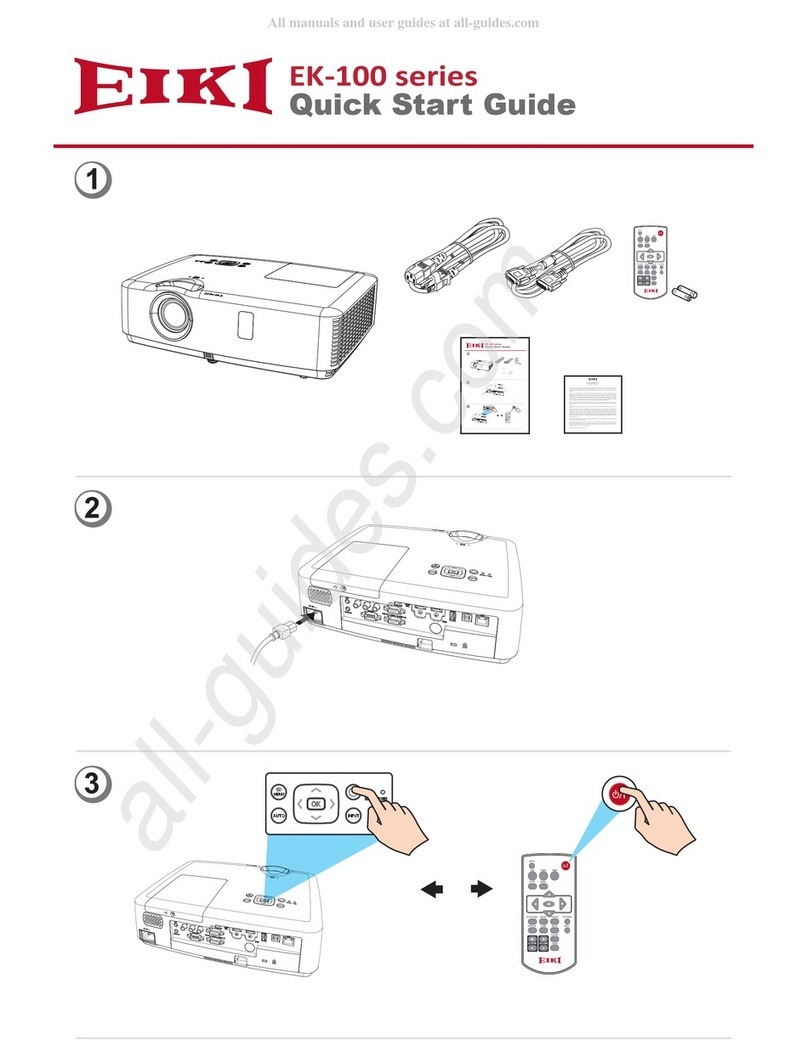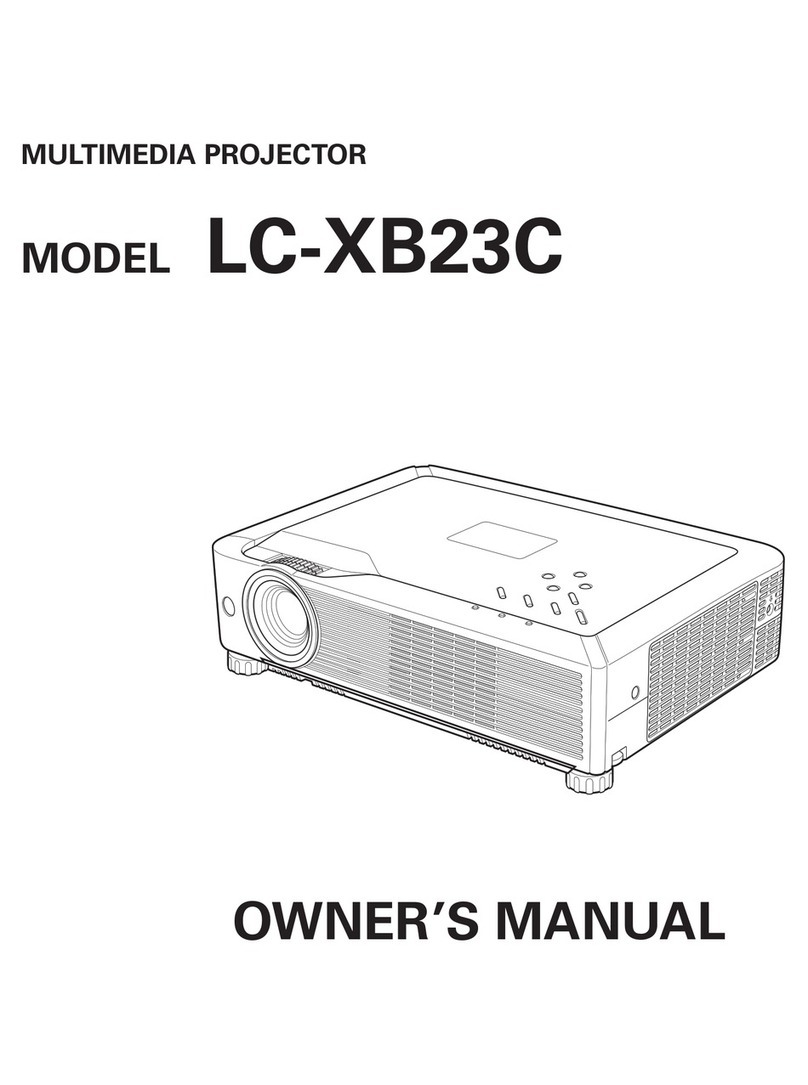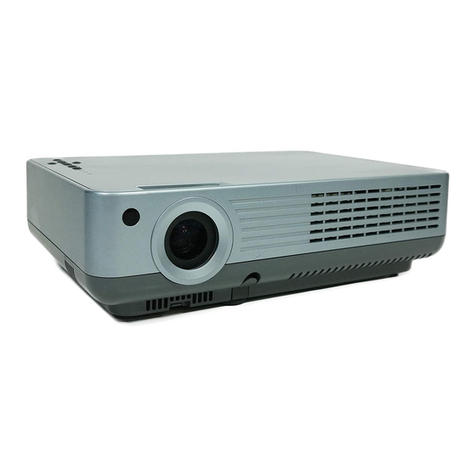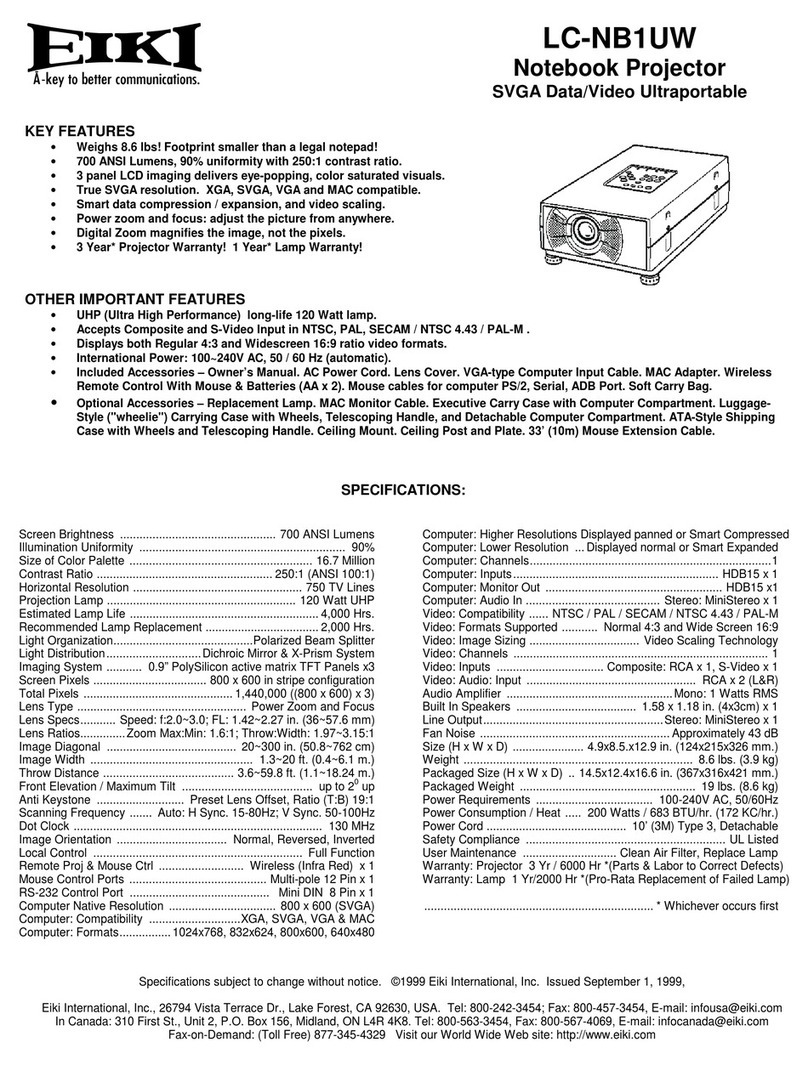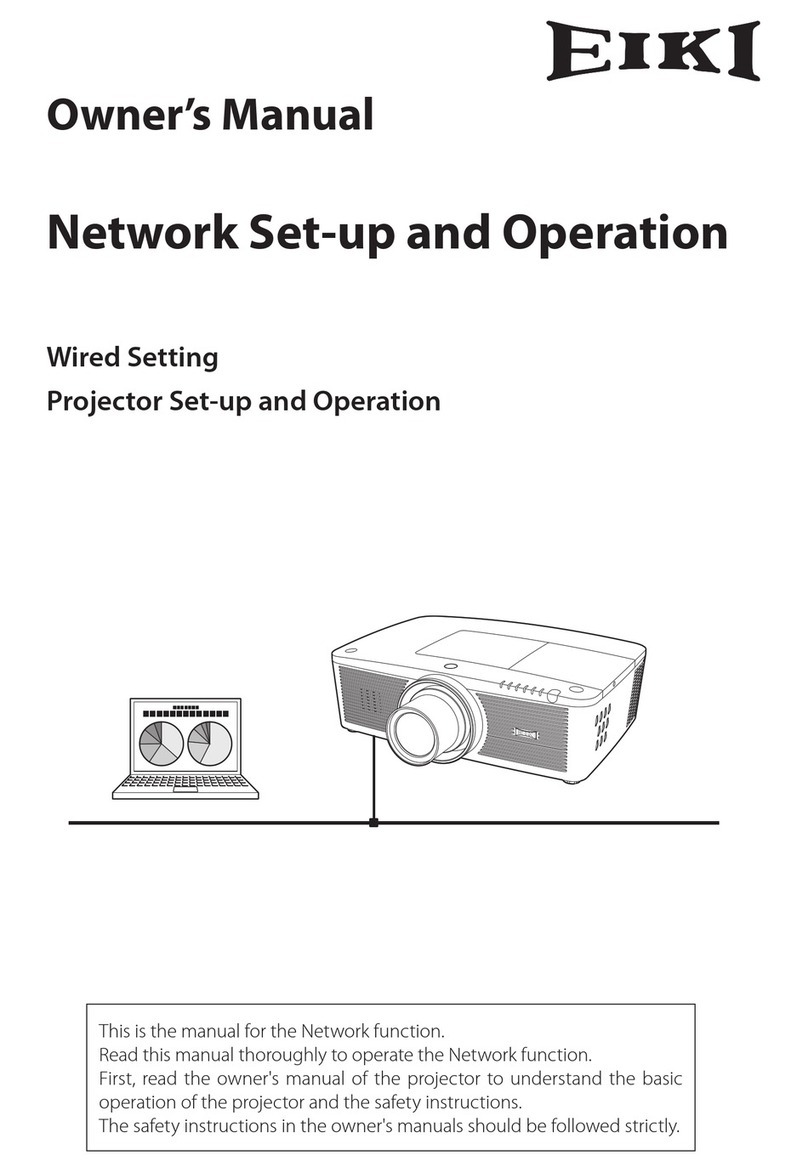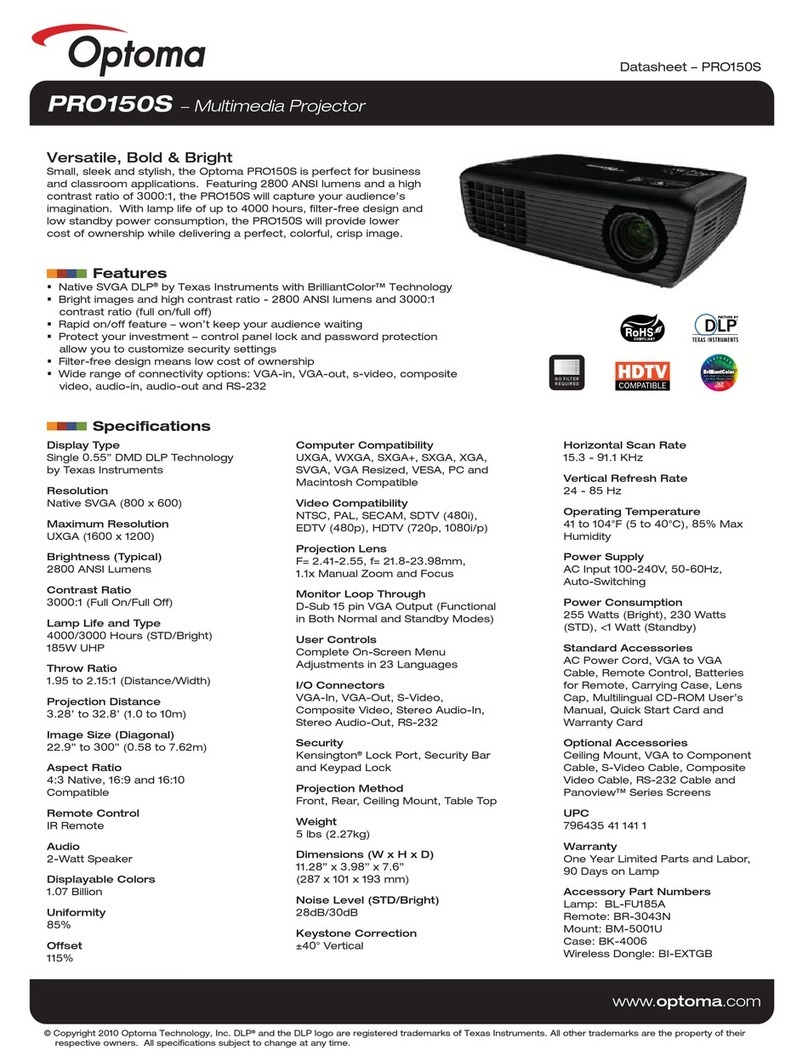- 4 -
Specifications
Owner’s Manual (CD-ROM)
Quick Reference Guide
AC Power Cord
Wireless/Wired Remote Control Transmitter and Batteries
VGA Cable
USB Cable
Control Cable for Serial Port
Lens Cap (LC-X71)
Lens Attachment
Lens Replacement And Installation Manual
PIN Code Label
Multi-media Projector
Accessories
1.3” TFT Active Matrix type, 3 panels
19.8 lbs (9.0 kg) LC-X71, 18.0 lbs (8.2 kg) LC-X71L
12.6” x 6.6” x 16.8” (319 mm x 170.8 mm x 435.5 mm)
1024 x 768 dots
2,359,296 (1024 x 768 x 3 panels)
PAL, SECAM, NTSC, NTSC4.43, PAL-M, and PAL-N
Up and Down
800 TV lines (HDTV)
INT. SP. Stereo (R and L), 3 watt RMS (T.H.D. 10%)
41 ˚F ~ 95 ˚F (5 ˚C ~ 35 ˚C)
14 ˚F ~ 140 ˚F (-10 ˚C ~ 60 ˚C)
Projector Type
Net Weight
Dimensions (W x H x D)
Panel Resolution
Number of Pixels
Color System
Scanning Frequency
Horizontal Resolution
Built-in Speakers
Operating Temperature
Storage Temperature
LCD Panel System
300 watt type
Projection Lamp
0˚ to 10.5˚
Feet Adjustment
Power Source : AA or LR6 ALKALINE Type x 2
Operating Range : 16.4’ (5 m)/±30˚
Dimensions : 2.0” x 1.4” x 7.6” (50 mm x 36 mm x 193 mm)
Net Weight : 0.35 lbs (160 g) (including batteries)
Laser Pointer : Class II Laser (Max. Output: 1mW/Wave length: 650±20nm)
Remote Control Transmitter
480i, 480p, 575i, 575p, 720p, 1035i, and 1080i
High Definition TV Signal
H-sync. 15 kHz ~ 100 kHz, V-sync. 48 ~ 100 Hz
Motorized Lens Shift
DVI Terminal (Digital) HDCP Compatible, HDB 15-pin Terminal (Analog)
and Stereo Mini Type Jack (Audio)
Input 1 Jacks
BNC Type x 5 (G or VIDEO/Y, B or Cb/Pb, R or Cr/Pr, H/V, and V),
Stereo Mini Type Jack (Audio)
Input 2 Jacks
RCA Type x 3 (VIDEO/Y, Cb/Pb and Cr/Pr), RCA Type x 2 (Audio R and L)
and DIN 4-pin (S-Video)
Input 3 Jacks
DIN 8-pin (Control port), USB port (Series B receptacle), Wired Remote Jack
and Pj-to NetDirector Connector
Other Jacks
Adjustable from 31” to 400”
Projection Image Size (Diagonal)
F1.8 ~ 2.1 lens with f=48.4 mm ~ 62.8 mm Motor zoom and focus (LC-X71)
Projection Lens
4.6’ (1.4 m) ~ 48.3’ (14.7 m)
Throw distance
AC 100 ~ 120 V (5.7 A Max. Ampere), 50/60 Hz (The U.S.A and Canada)
AC 200 ~ 240 V (2.7 A Max. Ampere), 50/60 Hz
(Continental Europe)
Voltage and Power
Consumption
●Specifications are subject to change without notice.
●LCD panels are manufactured to the highest possible standards. Even though 99.99% of the pixels are effective, a tiny fraction of the pixels (0.01% or
less) may be ineffective by the characteristics of the LCD panels.
●Each projector has its own characteristics.
When projecting with several projectors on the same screen or side by side, you may recognize different white balance and color uniformity on each
projector.

